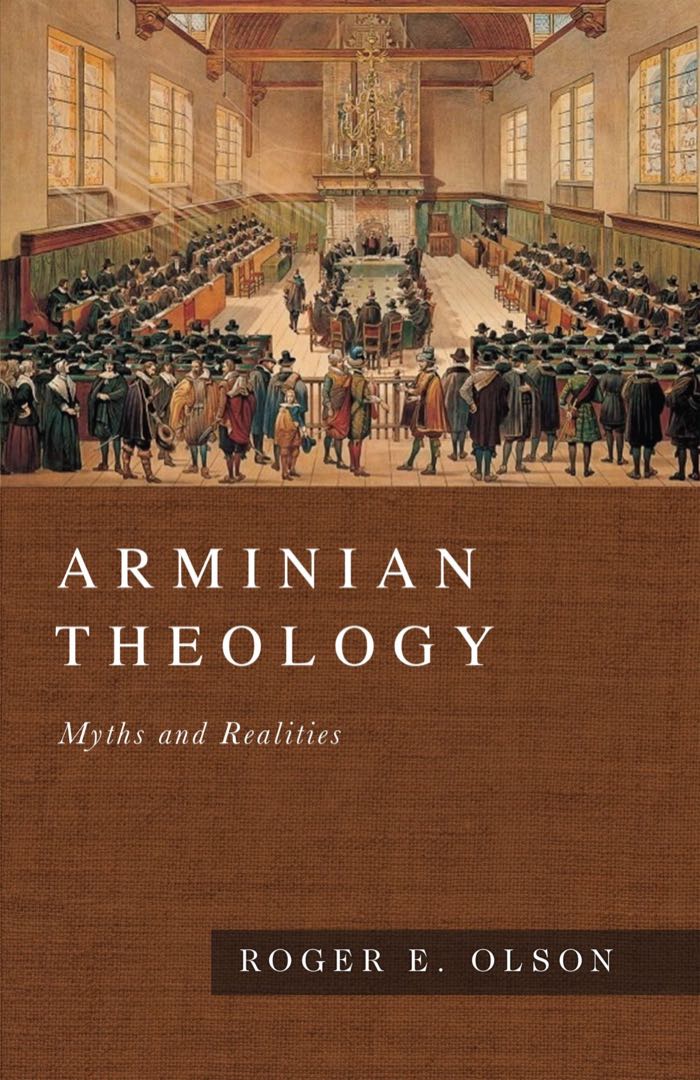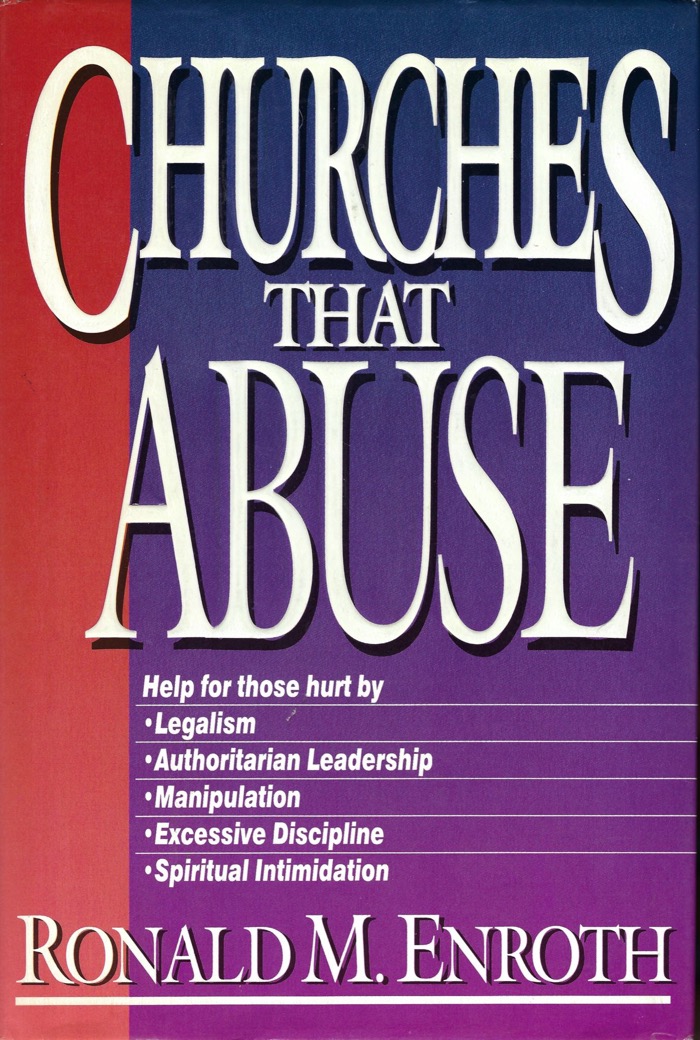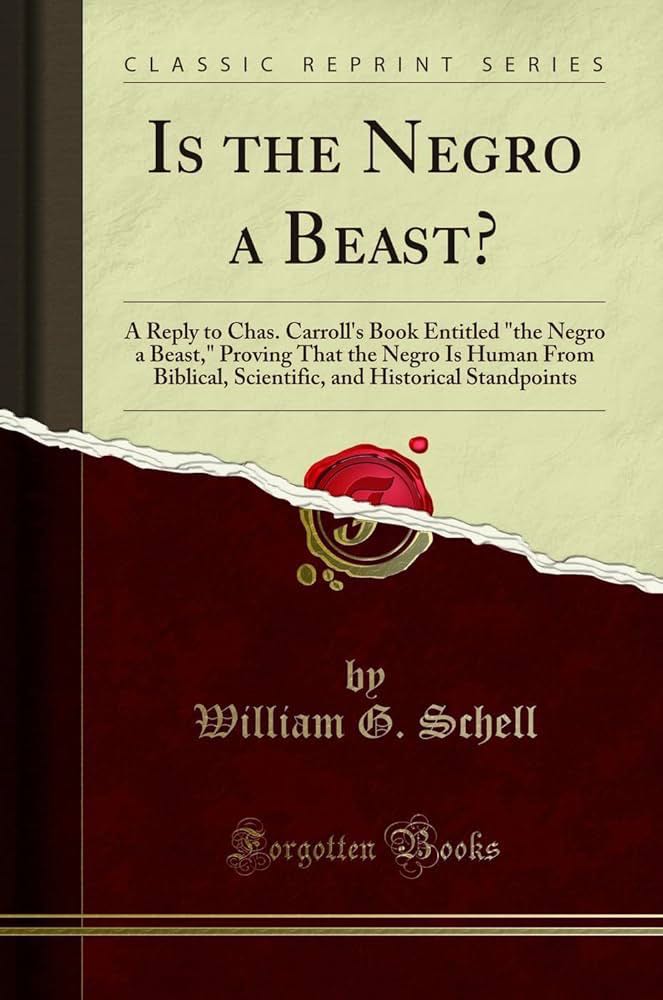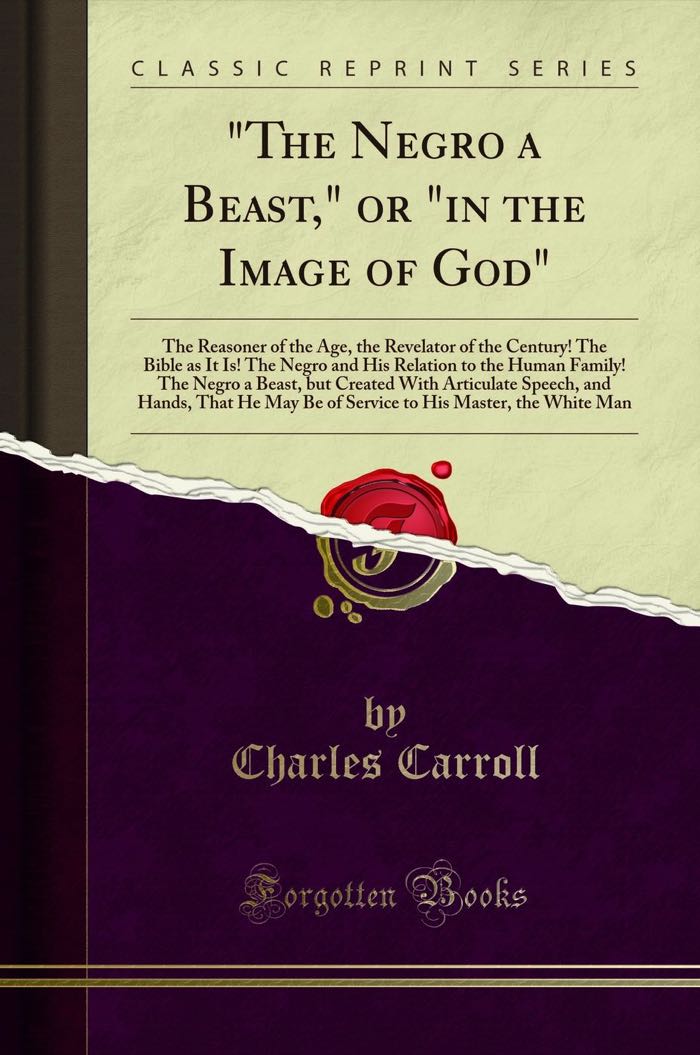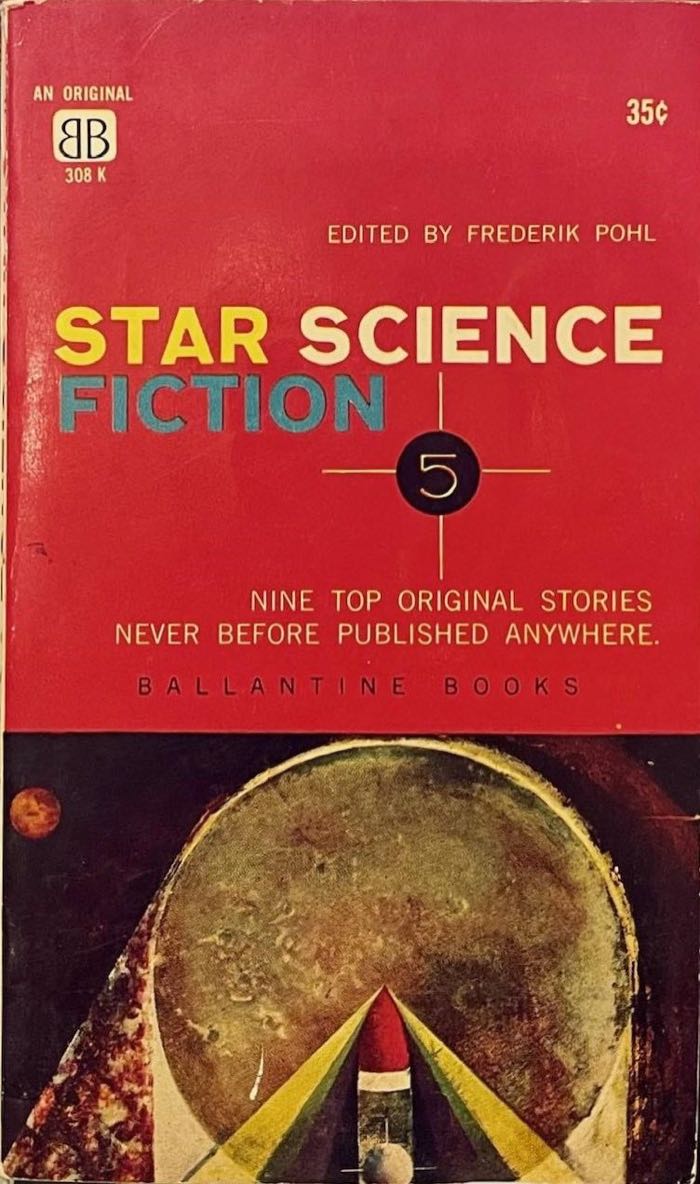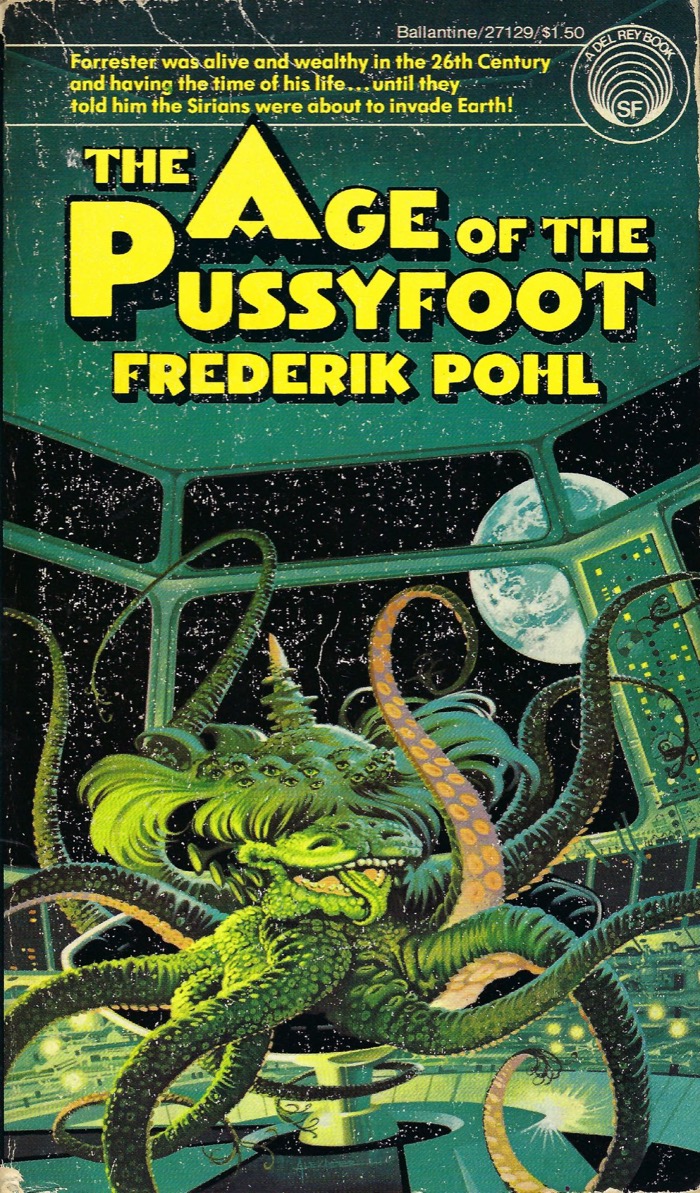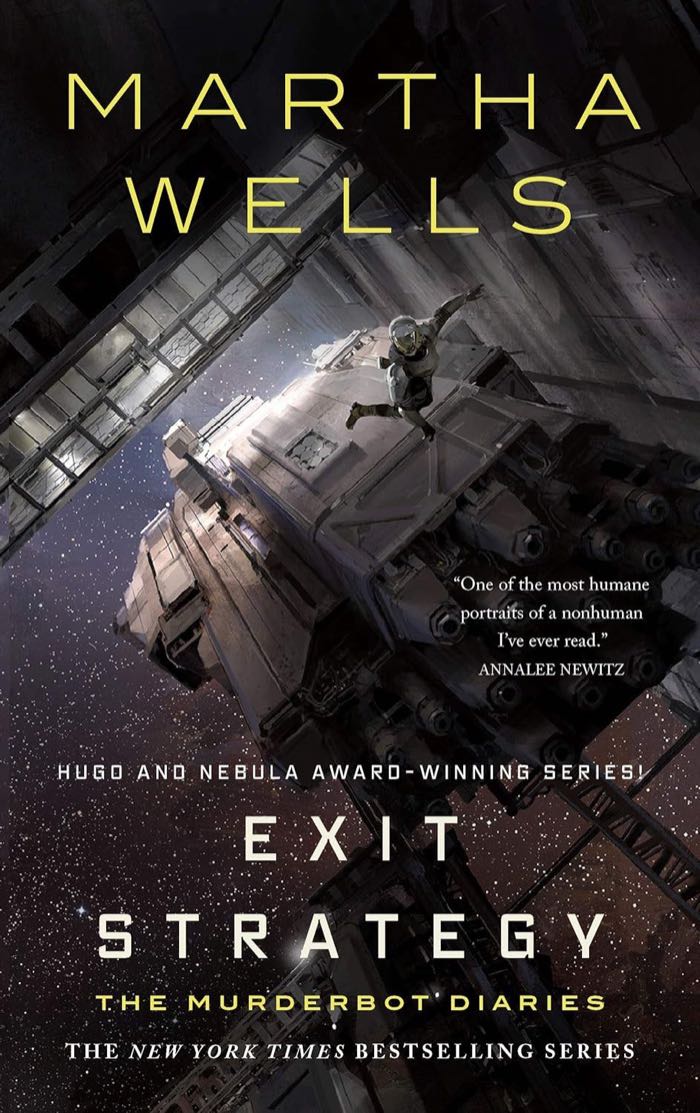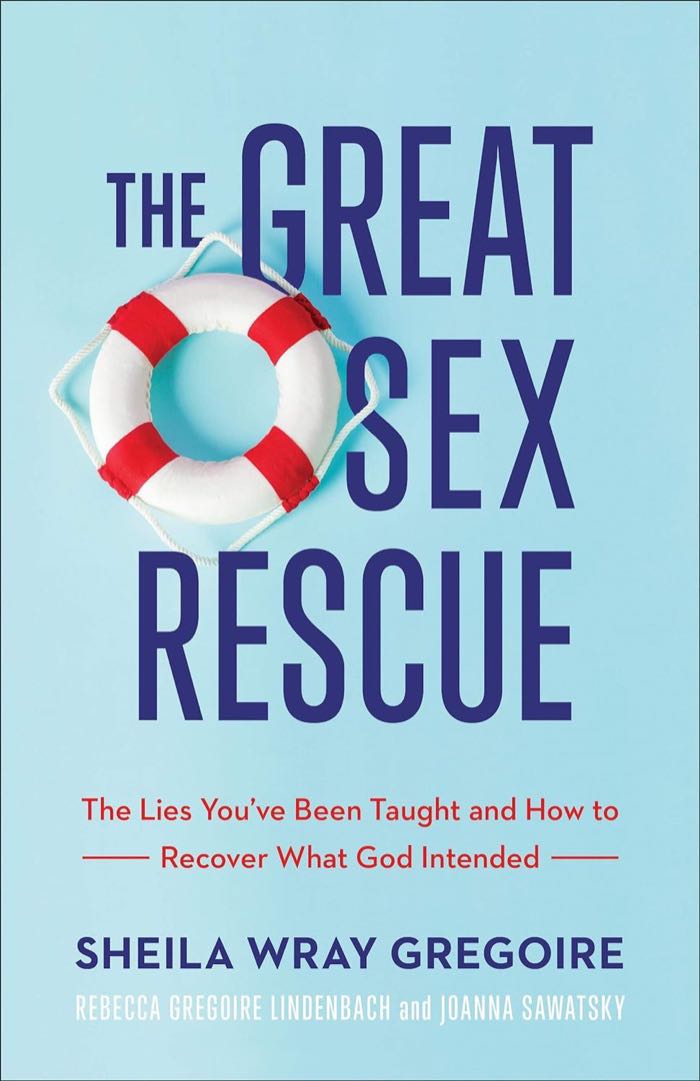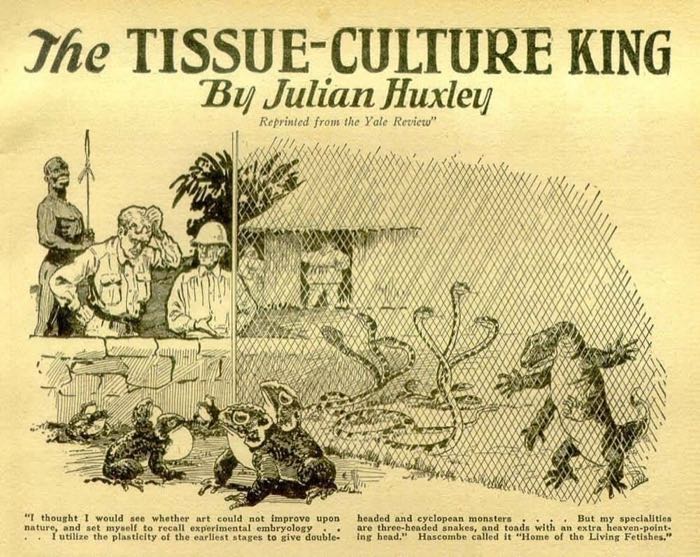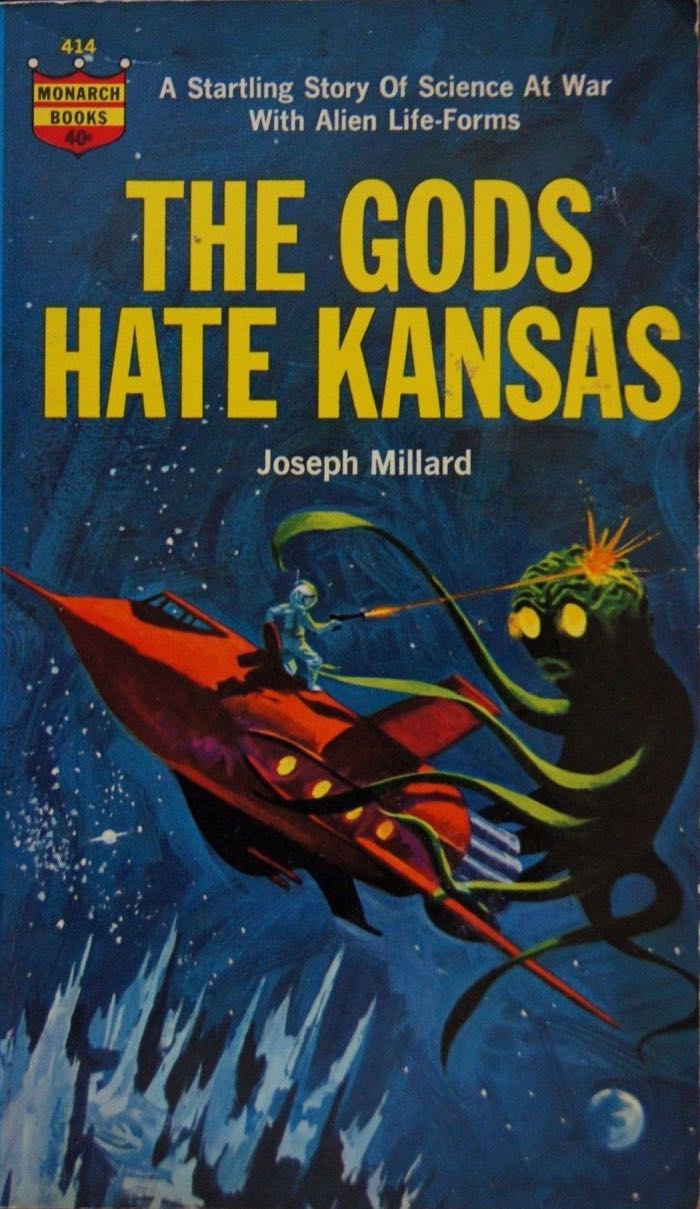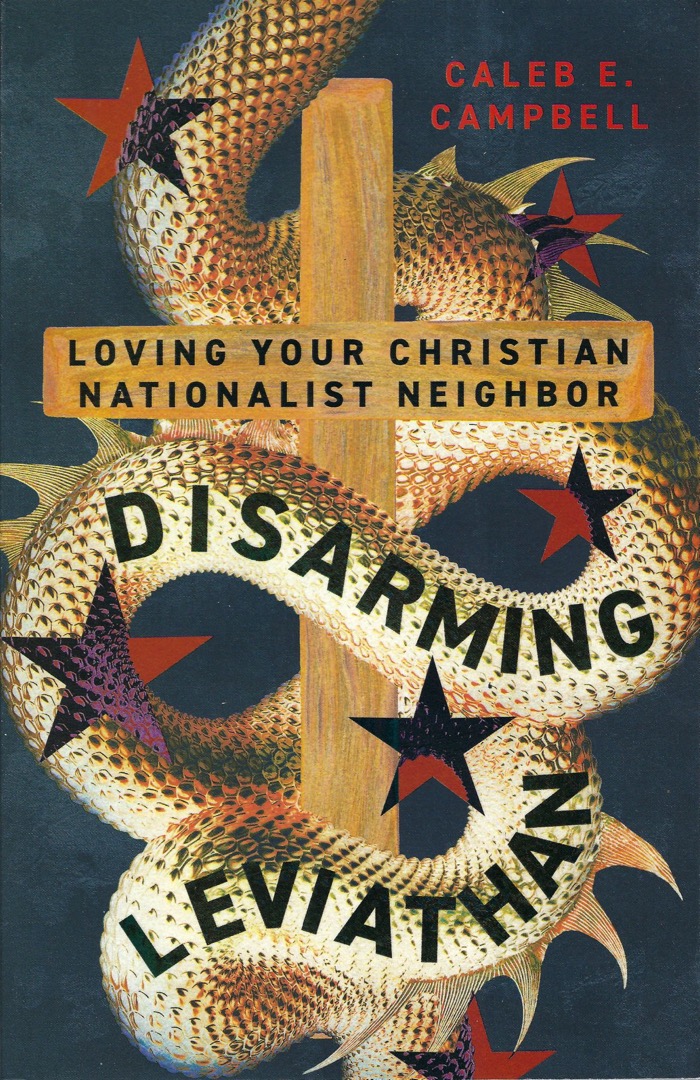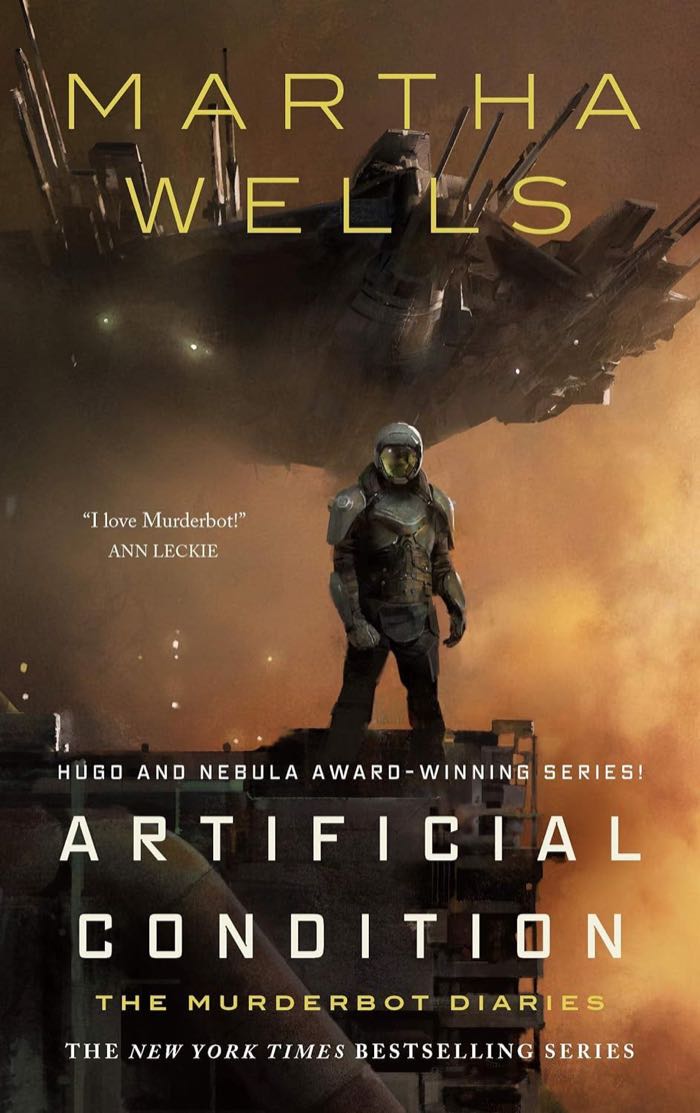Arminian Theology: Myths and Realities
Reviewed date: 2024 Sep 29
268 pages
Why an Arminian theology book?
I find Calvinism unconvincing, and Arminianism makes sense to me. I figured it was time to read a book explaining Arminianism and defending it against Calvinist criticism. Olson most particularly points out that Arminians do not start from an a prior assumption of free will. They start from the goodness of God as revealed in Scripture, and libertarian free will is a natural conclusion. Yes! I've been saying for years that I don't have a problem with the Calvinist idea that God in his sovereignty does not give humans free will to do good if that's how God chose to do it, but that when I look at the Bible I see plainly that God chose to do it differently. He chose to give us free will.
And another thing! Arminians generally treat Calvinists with respect and recognize that it's within the bounds of Christian orthodoxy, but Calvinists often don't extend the same courtesy. That's a poor witness. Arminianism was and is an orthodox Christian theology, and it should be treated as such.
What is Olson doing?
Olson's book is not a defense of Arminian theology per se. Rather, it is a response to ten specific misunderstandings of Arminian theology. (Although misunderstandings may be an overly-charitable characterization; many of these are just lies that Calvinist theologians and preachers have pushed.)
For each myth, Olson explains why it is not true, and he cites the writings of Jacob Arminius and various other prominent Arminians throughout the centuries. Olson effectively uses the words of Arminians themselves to put to rest the charges (lies) leveled by Calvinists. It's hard to continue to believe a myth when Arminius and generations of Arminians after him all explicitly deny those myths, and clearly teach a theology that contradicts them. In particular, Olson often cites:
- Jacob Arminius
- Simon Episcopius
- Hugo Grotius
- Philip Limborch
- John Wesley
- Jon Fletcher
- Richard Watson
- Thomas Summers
- William Burton Pope
- John Miley
- Charles Finney
- H. Orton Wiley
- Thomas Oden
No true Scotsman
Olson must continually mention that some who claimed Arminianism actually departed from the teachings of Arminius and taught something unfortunately close to semi-Pelagianism (e.g., Limborch and Finney) while others have departed entirely into Arianism and liberal theology. Olson denies that those teachers represent classical Arminianism, while noting that many prominent Calvinists have encountered Arminian theology only in these twisted forms. They've never read Arminius or any writings of faithful Arminians. That is part of the reason for this book: to make people aware that classical Arminianism—as taught by Arminius, Wesley, and many others—is an orthodox, faithful theology that is Christian, Reformed, and evangelical.
Introduction
Olson starts by defining a lot of terms.
- Calvinism - "shared soteriological beliefs" of people who follow John Calvin. His theology focuses on God's sovereignty, and its particular beliefs can be summarized by TULIP: total depravity, unconditional election, limited atonement, irresistible grace, perseverance of the saints.
- Reformed theology - broader than Calvinism but often confused with it, this theology encompasses Calvin and many of his Reformation contemporaries
- Arminianism - a framework developed by Jacob Arminius; a "Protestant theology that rejects unconditional election (and especially unconditional reprobation), limited atonement, and irresistible grace because it affirms the character of God as compassionate, having universal love for the whole world and everyone in it, and extending grace-restored free will to accept or resist the grace of God, which leads to either eternal life or spiritual destruction"
- Arminianism of the heart - the original Arminian theology as taught by Jacob Arminius, John Wesley, and others. It does not deny total depravity. It is doctrinally orthodox.
- Arminianism of the head - a Pelagian or semi-Pelagian theology, which is rooted in "an Enlightenment-based emphasis on free will that is most often found in liberal Protestant circles" which "denies total depravity and the absolute necessity of supernatural grace for salvation."
- synergism - "any theological belief in free human participation in salvation." Arminianism is an orthodox, "evangelical synergism"
- monergism - a broad term, but it "especially means that God is the sole determining agency in salvation."
- Pelagianism - a heretical version of synergism that "denies original sin and elevates natural and moral human ability to live spiritually fulfilled lives."
- semi-Pelagianism - a heretical version of synergism that "embraces a modified version of original sin but believes that humans have the ability, even in their natural or fallen state, to initiate salvation by exercising a good will toward God."
- free will - Calvinists believe in compatibilist free will (that is, free will which is compatible with determinism) which means a person is not able "to do other than what he or she in fact does." By contrast, Arminians believe in noncompatibilist (libertarian) free will which is "the agency that allows persons to do otherwise than they do."
- predestination - Arminians believe in conditional predestination (God predestines according to his foreknowledge) whereas Calvinists believe in unconditional predestination (God foreordains when he predestines.)
- common grace -
- prevenient grace - God's gift that restores the human ability to cease resisting the gospel. Prevenient grace restores human free will.
- Remonstrants - an early group of Arminius's followers, notably including Simon Episcopius, who produced a document (the Remonstrance) summarizing Arminian beliefs.
Myth 1: Arminian Theology Is the Opposite of Calvinist/Reformed Theology
Jacob Arminius and most of his faithful followers fall into the broad understanding of the Reformed tradition; the common ground between Arminianism and Calvinism is significant.
Reformed theology is a disputed term, but Olson points out that Arminius considered himself Reformed and believed his theology was a branch of Reformed theology, as did many of his contemporary Reformed theologians. Only later did his theology get pushed out as Calvinists redefined the boundaries of Reformed theology and now consider Arminianism as a departure from Reformed theology, not a form of Reformed theology. Olson points out that Arminianism has significant areas in common with Calvinism, and many scholars and theologians today and in history have recognized Arminianism as being at least closely related to Calvinism and Reformed theology. It is in no ways the opposite of Calvinism or Reformed theology. There is only the barest difference between Arminius and Calvin in most respects.
This actually rings true to me. As I was reading this book and hearing Arminius, Wesley, and others describe their theology, it was difficult at times to distinguish it from what I hear from Calvinists. Arminianism is not Calvinism, but it seems pretty close.
Myth 2: A Hybrid of Calvinism and Arminianism is Possible
In spite of common ground, Calvinism and Arminianism are incommensurable systems of Christian theology; on issues critical to both sides there is no stable middle ground between them.
Calvinism and Arminianism are not compatible. Of the five points of Calvinism, Arminians absolutely reject three of them. Arminians accept total depravity (T), reject unconditional election (U), limited atonement (L), irresistible grace (I), and have a variety of opinions about perseverance of the saints (P).
Thus, Olson points out that those who claim to be two-point Calvinists (accepting total depravity and perseverance of the saints) are nothing more than classical Arminians.
At the heart of the incompatibility between the two theologies is which view of God predominates: "Contrary to popular belief, then, the true divide at the heart of the Calvinist-Arminian debate is not predestination versus free will but the guiding picture of God: he is either primarily viewed as either (1) majestic, powerful, and controlling or (2) loving, good, and merciful." (page 73)
Myth 3: Arminianism Is Not an Orthodox Evangelical Option
Classical Arminian theology heartily affirms the fundamentals of Christian orthodoxy and promotes the hallmarks of evangelical faith; it is neither Arian nor liberal.
Arminians deny the heresies of Arianism, Socinianism, Pelagianism, semi-Pelegianism, humanism, and they deny that Arminianism is an inevitable slippery slope to liberal theology. Arminius affirmed the supremacy of Scripture, as did Wesley. Both affirmed the trinity and the divinity of Christ. By all measures, Arminianism is both within the bounds of orthodox Christianity and orthodox Protestantism.
Ah, but what about the Calvinist charges that by denying monergism the Arminians also deny justification by grace through faith alone? "But what is a person (e.g., John Wesley) heartily and warmly teaches the former while denying the latter?" (94) Olson points out that Arminians strongly deny that the two are linked, and that the Arminian doctrine of prevenient grace offers the explanation. If Calvinist critics do not accept this explanation, well, that explains why they are Calvinists, but it does not mean Arminians have denied any fundamental Reformation doctrine.
Myth 4: The Heart of Arminianism Is Belief in Free Will
The true heart of Arminian theology is God's loving and just characters; the formal principle of Arminianism is the universal will of God for salvation.
Arminianism stars with God's goodness. Free will is a downstream consequence of that, not the starting point. Arminians believe that unconditional election (as Calvinists teach) implies double predestination and makes God the author of evil, which is impossible due to God's goodness and love, which is a primary motif of Scripture.
Clearly Calvinists disagree. But the Arminian sees God's goodness in Scripture, recognizes that it is only free will that allows a theology that does not make God a sinner. Goodness and love are the start. Free will is never the point. It's only a consequence, an effect, a conclusion from from the evidence.
No Arminian starts with free will. Classical Arminianism is not an argument from humanism or Enlightenment thought.
Myth 5: Arminian Theology Denies the Sovereignty of God
Classical Arminianism interprets God's sovereignty and providence differently than Calvinism without in any way denying them; God is in charge of everything without controlling everything.
"The only thing the Arminian view of God's sovereignty necessarily excludes is God's authorship of evil." (p116) "God permits and limits them without willing or causing them." And here is where Olson explains various categories of God's providence.
- preserving or sustaining providence: God's upholding of the created order. E.g., gravity. Even deists believe in sustaining providence.
- concurring providence: God's "consent to and cooperation with creaturely decisions and actions." Every deliberate action, even lifting one's hand, is enabled by God's concurring providence.
- governing providence: God's control over the world, including moral choices and actions. Calvinists say God's governing providence is de facto over every choice. God determines it all. Arminians say God's governing providence is de jure but only partly de facto—he has the right to control and determine everything, but he choose to allow human free will.
In short, Arminians reject the Calvinist view of total de facto governance because that view of God's sovereignty makes God the author of evil, and anything that makes God the author of evil would by consequence make God's character morally ambiguous at best. Arminians believe that if we do not have free will (as the Calvinists believe) then this would mean God "plans, guides, and directs" sin to happen.
Arminians believe that God controls everything, except he gives humans the free will ability to choose sin. "God is the cause of everything but evil, which he only permits." (120) This leads to the idea that although God does not cause evil, he—in his divine providence—concurs with a human's choice to sin. Or, we can talk of God's antecedent and consequent wills. The antecedent will is when God wills to allow human beings the free will to choose sin. His consequent will is when, after humans choose to sin, God concurs in their decision rather than withdraw his concurrence to their free will choice.
It seems all a bit muddled, but the point is this: Arminians do not deny the sovereignty of God. They just believe that the Calvinist version of sovereignty makes God out to be evil. In the Arminian view, God in his sovereignty has allowed human beings the free will to choose sin, which he permits. That is, "sinful and evil acts are never planned or decreed by God; God only decrees to allow them." (p126) That sounds like a distinction without a difference unless free will is real, and we really could choose to not sin (with the help of prevenient grace.) This brings us once again to the two kinds of free will:
- compatibilist free will or philosophical free will: the Calvinist view, which is that we have free will to do what God has already predestined or predetermined for us.
- libertarian (noncompatibilist) free will: the Arminian view that we have actual free will, as in we actually could choose to do something different than we did.
There seems to be a conflict between God's foreknowledge and free will. One way to solve this is open theism, which denies God's timelessness and, in a sense, denies that God does actually know the future before it happens. That's not the way classical Arminianism goes. Classical Arminians do generally believe in the timelessness of God, just like Calvinists.
Arminians hold a high view of God's sovereignty. They believe "God's voluntary self-limitation" explains why God is not the author of evil. Arminians believe that in the Calvinist framework, God is the author of evil and thus God is not good. Obviously Calvinists don't see it that way. But Arminians cannot help but see in Calvinism a system that makes God out to be evil. This is manifestly untrue, so Calvinism fails. (In the Arminian view.)
Myth 6: Arminianism Is a Human-Centered Theology
An optimistic anthropology is alien to true Arminianism which is thoroughly God-centered. Arminian theology confesses human depravity, including bondage of the will.
Arminians believe God's prevenient grace grants us the libertarian free will to accept the offer of salvation. Therefore all the glory is God's, none is ours. The Arminian view is more that we have "freed will" rather than "free will." God frees our will by his prevenient grace. Arminius writes, "No man believes in Christ except him who has been previously disposed and prepared by preventing or preceding grace." (p145)
So, Arminians do believe in original sin and total depravity. They also believe that God's prevenient grace frees our will from its natural fallen state, allowing us to choose what is right.
Crucially, though: in the Arminian view, original sin does not include condemnation. There is no guilt for original sin, only for actual sin—which is inevitable.
Calvinists respond that universal prevenient grace is a denial of original sin and total depravity. One can understand that point of view, but the Arminian sees it differently, and it's important to remember that Arminians should be judged for what they actually believe and teach, not what Calvinists think are the logical conclusions of their beliefs.
Myth 7: Arminianism Is Not a Theology of Grace
The material principle of classical Arminian thought is prevenient grace. All of salvation is wholly and entirely of God's grace.
Arminians are big on grace. It's all about grace! We do nothing good without grace. "Humans are dead in trespasses and sins until the prevenient grace of God awakens and enables them to exercise a good will toward God in repentance and faith." (p159)
Prevenient grace has four aspects: calling, convicting, illuminating, and enabling. In the Arminian view, the prevenient grace is not saving grace, but it awakens a person and frees his will to be able to respond to the gospel. Thus prevenient grace leads the Arminian to a three-stage view of the human condition: unregenerate, freed, and regenerate.
Calvinists sometimes respond to Arminianism by asking, "Isn't the bare human decision to accept and not resist God's grace and mercy unto salvation a meritorious work?" (p166) No! That decision is already the work of God's prevenient grace.
This is a fundamental point of disagreement. Arminians believe that salvation is all grace, but that grace is resistible. Calvinists respond that if grace is resistible, then salvation is no longer all grace. To which Arminians reply, "A gift that can be rejected is still a gift if freely received." This is a fundamental disagreement. Again, Calvinists say that the mere accepting of the gift of salvation is a meritorious good work, and Arminians disagree.
Myth 8: Arminians Do Not Believe in Predestination
Predestination is a biblical concept; classical Arminians interpret it differently than Calvinists without denying it. It is God's sovereign decree to elect believers in Jesus Christ and includes God's foreknowledge of those believers' faith.
Calvinists believe God fore-ordains when he predestines. Arminians believe God predestines based on his foreknowledge. Further, Arminians interpret the biblical "unconditional election" as corporate, not individual. God unconditionally elects a people. The people consists of those who will believe.
From the Arminian point of view, they look at Calvinism and wonder, if God already preordains people's destinies, why Jesus was necessary? Does not the election and predestination, in the Calvinist sense, make Jesus an afterthought? Clearly Calvinists don't think so, but from the Arminian point of view, the Calvinist framework undercuts the necessity of Christ.
Olson pauses for a brief discussion of Molinism (middle knowledge) and of open theism, which are two frameworks that seek to solve the contradictions between foreknowledge and free will. Middle knowledge is the idea that God knows what any given creature would do in any given situation. So, he "envisions every possible world, he knows intuitively what person X, who is endowed with libertarian free will, would do at any given moment and in any given situation." Olson points out that a number of Arminians view middle knowledge as being incompatible with libertarian free will, so it doesn't really solve the problem.
Open theism is the view that God does not know the future exhaustively. He cannot know it, because it hasn't happened yet. Olson points out that very few Arminians have adopted open theism.
Myth 9: Arminian Theology Denies Justification by Grace Alone Through Faith Alone
Classical Arminian theology is a Reformation theology. It embraces divine imputation of righteousness by God's grace through faith alone and preserves the distinction between justification and sanctification.
Arminians believe in imputed and imparted righteousness, as do Calvinists. Arminius distinguished justification from sanctification. Wesley did to, pointing out that "justification as imputed righteousness always results in inward transformation that produces works of love." (Olson's summation, p212.) Wesley rejected imputation of righteousness without transformation through inward righteousness, but he didn't confused or conflate the two. In Arminianism, there is no thought of a works-based salvation: justification is not sanctification, and sanctification is never the cause of justification.
This chapter had too many fine points of hairsplitting for me. The distinctions were hard to understand. I am satisfied that Arminius and his followers believe in justification by grace alone through faith alone.
Myth 10: All Arminians Believe in the Governmental Theory of the Atonement
There is no one Arminian doctrine of Christ's atonement. Many Arminians accept the penal substitution theory enthusiastically while others prefer the governmental theory.
Arminius taught penal substitutionary atonement. Grotius taught the governmental theory of atonement, as did many subsequent Arminians. But not all. Wesley, for example, taught penal substitution.
Olson takes pains to point out that the governmental theory is substitutionary, a fact Calvinist critics often fail to mention. It just isn't penal substitution. Jesus paid a penalty, but not the actual penalty, as a substitution.
Conclusion
In his conclusion, Olson restates what he said at the beginning. Don't attribute to someone a belief that he explicitly rejects or denies, even if you think it is a logical and necessary consequence of his beliefs. You can point it out and say it's the logical consequence, and you can point out that the other side is illogical in denying it. But don't claim the other side believes what they explicitly reject and deny.
The Journey From Texts to Translations: The Origin and Development of the Bible
Reviewed date: 2024 Sep 24
462 pages
This 1999 book traces the development of the Bible from the invention of writing, to the manuscript evidence, and to our modern English-language translations. There was a lot I already knew, but a lot of new information as well.
For example, I was aware that we have thousands of manuscripts of the New Testament, some dated within a hundred years or so of the original writings. I had not been aware that the earliest Old Testament manuscripts date to a couple hundred years BC, which puts them a thousand years or more removed from the time of their writing. Then again, we have pretty good evidence that the Old Testament text has been well-preserved, so it's not like we're unsure of its reliability.
I was surprised at the rapidity with which the early Christians translated the Bible into other languages. I was also surprised how many translations we know about through references in other writings but which were not preserved.
The influence of the Latin Vulgate translations also surprised me. I was aware of it, and knew it was important, but hadn't realized the effect it had, to the point where it was long considered more accurate and more inspired than the Greek and Hebrew manuscripts.
Further, when viewed in its historical context, it seems odd that anybody would ascribe so much importance to the Authorized Version (King James Version). It was a monumental achievement and held a place in the English language for generations, but it was hardly static. It changed a lot from 1611 to the 1769 edition that some American fundamentalist Christians revere even to this day.
And finally, the book made me aware of many English translations that I was previously unaware of. I was particularly intrigued by the J.B. Phillips translation of the epistles, so I've ordered a copy of his New Testament. It's sort of like The Living Bible before The Living Bible, and if his translation of Philemon is any measure, I'm going to have a lot of fun reading it.
Churches that Abuse
Reviewed date: 2024 Sep 6
231 pages
My thoughts
This 1992 book on abusive churches is big on examples. We get stories of many different abusive churches. This is helpful in one sense: it gives us a picture of what happens in high-control systems. We see how they operate, how they influence and manipulate and control their members. Reading so many different examples should, hopefully, allow us to recognize these abusive churches when we encounter them.
On the other hand, Enroth does not do a good job of explaining the systems at work. We get many examples, but it's often unclear what specific feature he is trying to highlight. So we get a broad view and lots of examples, but not enough framework to hang it all on.
Prior to reading this book, I'd read The Subtle Power of Spiritual Abuse by David Johnson and Jeff Van Vonderen, and that book gives a good conceptual framework for understanding abuse, high-control systems. I'd suggest reading that book first, then reading Churches that Abuse to supplement it.
1. Introduction
Abusive Churches: A View From Within
An example of an abusive church: Set Free Christian Fellowship in Anaheim, CA with Pastor Phil Aguilar. Abusive churches invariably have a high-control authoritarian at the top.
2. Fringe and Fanaticism
Abusive Churches Can Go Over the Edge
Donald Lee Barnett’s Community Chapel went off the rails with spiritual dancing, etc. They neglected the Bible and started focusing on experiences, getting into occult practices. Subjective experience became the test of truth, not the Bible. If so
“The tragedy of community Chapel goes back to a misplaced loyalty. People thinking that they were placing their allegiance in the ward of God were actually placing their allegiance in a man and his interpretation of the word of God. That is crucial to understanding why people were so easily deceived. they thought they were really obeying the word of God” p48
3. Past and Present
Abusive Churches Are Not New
Frank Sandford’s turn-of-the-century Shiloh cult in southern Maine. “Sandford was convicted because he withheld not only medical treatment, but faith healing as well” (p68)
4. Authority and Power
Abusive Churches Misuse Scriptural Authority
Church of Bible Understanding. “Control-oriented leadership is at the core of all such churches.” (p80)
5. Manipulation and Control
Abusive Churches Use Fear, Guilt, and Threats
Love-bombing, manipulation, fear, control, humiliation. Internal Surveillance and reporting systems help abusive churches keep their people under control. Cutting off family, friends, support systems. Prior approval and strict oversight of any dating relationships, or even outright bans on marriage, or arranged marriages.
6. Elitism and Persecution
Abusive Churches See Themselves as Special
Spiritual elitism. Make people feel they are special, have special knowledge, special revelation, special access to God’s work. They are insiders. And persecution is a mark of elitism. More suffering means more holiness, more spirituality. This allows leaders to brutalize people in order to purify them. It’s all a sham to control people.
7. Life-Style and Experience
Abusive Churches Foster Rigidity
Abusive groups descend into legalism, dictating the smallest decisions like dress, decor, etc. which must all be approved by the leadership. Enforced conformity of lifestyle.
8. Dissent and Discipline
Abusive Churches Discourage Questions
Groups use public humiliation and ridicule as discipline. Dissent is not tolerated. Strange discipline: children taken from their mothers, forced diets, forced fasting, beatings, forbidden to bathe. Members are discouraged or disallowed from reading or viewing outside criticism or outside material.
9. Exit and Adjustment
Abusive Churches Make Leaving Painful
Leaving is hard and emotional. There is a period of desocialization (leaving the group) and then resocialization into mainstream culture. The emotional needs during this time are high. It’s post-traumatic stress on par with rape victims or combat veterans. It can begin with numbness, a lack of feeling. This is a protective mechanism. Extreme fatigue and sleepiness. People develop antisocial and confrontational traits. They are still vulnerable and weak. “Vague and undefined anger is common at this point.” Complex feelings of loss, isolation, confusion. Difficulty trusting. “Depression is almost inevitable.”
An ex-member states: “It is an extremely important factor whether a person leaves an abusive-church situation knowing that the group was wrong, or believing that he was wrong and is now stunning against God.”
After the initial period, the post-group reality sets in. “Depression, frustration, and alienation.” The world is hard to manage. Guilt over wasted years. Self-condemnation. Avoidance for a time, because they aren’t ready to handle what they left. Shame, embarrassment. A job or career may be an anchor. Counseling can help.
Shame, embarrassment, doubts about God, inability or reluctance to trust people.
The group shuns those who leave, so people lose all their connections and friendships.
Leaving is hard, not allowed sometimes.
10. Discernment and Response
Abusive Churches Present a Warning
Abusive churches prey on the spiritually immature who do not recognize that what they are getting is counterfeit. They have zeal for God but no knowledge and little wisdom. The church asserts control through offering guidance and advice, and the new members quickly become unable to function without instructions from those in authority over them. The churches usually teach orthodox Christianity with maybe a few odd but not outlandish beliefs, though the behavior and practice doesn’t measure up.
“Authoritarian leaders are ecclesiastical loners. That is, they do not function well or willingly in the context of systematic checks and balances.”
11. Challenge and Change
Abusive Churches Will Always Exist
A warning that abusive churches are forming right now, that the tendency toward abuse is common, and that if it is noticed early it can sometimes be corrected. Enroth gives several examples of churches that seem to be making sincere repentance for their prior authoritarian ways. (Maranatha even shut itself down.)
Is the Negro a Beast? A Reply to Chas. Carroll's Book Entitled "The Negro a Beast" Proving that the Negro is Human from Biblical, Scientific, and Historical Standpoints
Reviewed date: 2024 Sep 5
238 pages
Schell's 1901 book is a response to a racist book published a year earlier wherein Charles Carroll argued that only pure-blooded whites are men, and everyone else is a mere beast created by God to serve mankind. Carroll's book advances a wicked idea and dresses it up with twisted history, twisted science, and twisted Scripture. Schell's book eviscerates Carroll's lies.
I am sure that my time reading Carroll's racist book and Schell's rebuttal was not well-spent. But when I get a stupid idea in my head (like reading a woke anti-racist book from 1901) I have to run it down to completion. So here it is.
I didn't take detailed notes, so the following are summary thoughts and unorganized notes.
Soul vs spirit
Schell draws a distinction between soul (which animals possess) and spirit (which only humans possess). I don’t agree with the distinction, but I take his point that whatever it is that God imbued humans with, the animals don’t have it. And apparently there is a distinction in Greek (see Hebrews 4:12, 1 Thessalonians 5:23).
And hey! Schell is talking about Hebrew and Greek, which is something Carroll never did. Did Carroll even know Hebrew or Greek? There’s no evidence in his book to suggest that he did.
According to Schell, animals have mortal bodies, mortal minds, and mortal souls. Humans have mortal bodies, but due to the infusion of a spirit, humans have immortal minds and immortal souls.
Schell points to belief in an afterlife and the worshiping of a higher power as evidence of an immortal mind, which consequently means an immortal soul, and thus is a human being. Even the remotest, most isolated and primitive tribes in Africa believe in an afterlife and worship gods, and thus they are human.
Argument from moral conscience
Schell makes a moral argument, that it is man’s conscience which prompts him to act morally, unlike Carroll’s claim that morality is a product of the mind. Schell rightly points out that animals have no moral intuition. “The Negro possesses the moral faculty the same as the Caucasian” and is thus clearly a man.
Just read the Bible: beast means wild animal
This is the best part of the book. Schell digs into the Bible and uses its plain meaning, which anybody can see, to display the sheer brazen lie of Carroll's claims. Schell eviscerates Carroll’s claim that the word “beast” in the Bible refers to the Negro. Simply looking at the actual Hebrew word, and the Greek translation of that word in the Septuagint, puts to rest Carroll’s lie. The word means literally a beast, a wild animal. Schell points out many references to “beast” in the Bible that can only possibly mean animal, so Carroll’s cherry-picked examples are shown to be worthless. Just reading the Bible plainly—even with no knowledge of Hebrew or Greek—is enough to sink Carroll’s claims. Indeed, Schell mainly just quotes Carroll’s examples, then reads ahead a few more verses to show how Carroll’s interpretation is ridiculous on its face.
Natural variation, not amalgamation
Carroll had argued that the various colored races of mankind (Malay, Mongolian, and Indian) were the product of mixed-blood descendents of white-Negro pairings, which he called amalgamation. (Side note: was this a common term in 1900?) Schell disagrees, pointing out a number of problems with Carroll's idea. Instead, Schell suggests that natural variation is the cause. While Schell is undoubtedly right, he spent quite a bit of time veering off into Larmarckian evolution (although he doesn't use that term). That's the idea that acquired traits can be passed to one's children. He also claims that a woman's actions and ruminations (mere thoughts!) can imprint characteristics upon the child in her womb, and mentions that he's seen it happen. So, there's that.
Ham
Schell also spends quite a bit of time arguing that dark-skinned people are the descendants of Ham. He looks at biblical, archaeological, and historical evidence to make the case. Fortunately Schell doesn't claim this is due to a curse, or that there is anything inherently inferior or problematic about dark skin. This theory of Hamitic origin directly refutes Carroll's claim that God created negroes in the garden of Eden. And while I disagree with Carroll, Schell's biblical linguistic evidence (and his other evidence) seems remarkably thin.
Civilizations
Schell points out that Carroll is lying when he claims no non-white civilization ever existed. There is ample evidence in the historical and archaeological record, which Schell provides.
The Gospel
I was heartened to see that Schell addressed Carroll's false gospel. According to Carroll, the gospel we should be preaching is the Plan of Creation: that God created man, created beasts (the Negros) to serve him, and charged man with ruling over the beasts and extending his dominion over the whole earth. Man failed to do that, instead amalgamating and filling the earth with mixed-blood offspring. So God wiped them out in a flood and started over. Unfortunately, Noah's descendents went right back to amalgamating and once again filled the earth with mixed-blood offspring. God had promised not to wipe mankind out in another flood, so he picked Abraham and started a nation who would heed his commands. They strayed into amalgamation, so God sent prophets to warn them, but the people didn't listen. Finally God sent his son Jesus to preach against the sin of amalgamation, but they killed him. Jesus's mission was a failure: the Christian religion that Jesus started soon descended into the same error, preaching that the negro was a man. The proper way forward for the human race depends upon 1) murdering outright every mixed-blood creature, 2) properly treating the negroes as beasts whose purpose is to labor for the pure-blooded Adamic man (that is, white men), and 3) extending dominion over the whole earth. Once that dominion spreads over all the earth, that will usher in the new millennial reign.
That is not the gospel of Jesus Christ.
Schell points this out, and presents the true gospel. That we are sinners, that we broke God's law and are under judgment, that Jesus died to pay the penalty for our sin, and that if we repent of our sins and put our trust in Jesus that we will be born again and be forgiven for the sins we have committed. When we receive the baptism of the Holy Spirit we will be "fully restored to God's image of righteousness and true holiness." (In classic Church of God understanding, Schell presents this baptism of the Holy Spirit as a second work of grace, separate and distinct from the salvation which comes when we repent and believe.)
Overall thoughts
I'm relatively impressed with Schell's work here. He has grounded his case in Scripture, and it's a sound case. The parts that he grounded in history, archaeology, and science are good too, but limited by the understanding of the time. (This was published in 1901.) Finally, I see in Schell's words a true love for his fellow man, meaning every human being. That fruit of the spirit is absent entirely in Carroll's work.
The Negro a Beast, or In the Image of God
Reviewed date: 2024 Sep 2
382 pages
This book from 1900 is perhaps the most racist thing I've ever read. It angers me that a man claiming to be a minister of God would dare to write such words, and furthermore that he would twist the Scriptures to justify and support his dehumanizing ideas.
I only read this so I could understand the rebuttal published a year later by a Church of God (Anderson, Indiana) minister.
The following is a summary of the book's contents. It feels wrong to sanitize the language when the whole idea behind the book is so offensive, so I'll use the terms Charles Carroll uses (like negro, beast, and amalgamation) even though they are out of date and somewhat offensive.
Chapter 1
Man is a special creation, unlike anything else. He is made in the image of God, unlike the animals. This is at odds with the atheistic theory of Naturalistic Development which says that man is simply a species of ape. He leans heavily on 1 Corinthians 15:39 wherein Paul draws distinctions between various "kinds" of flesh, distinguishing animal flesh from human flesh.
Chapter 2
Chas. Carroll spews pages of anatomical "evidence" about hair quality, facial features, bone structure, and brain size to "prove" that negroes resemble apes more than they resemble white men. He presents sociological and academic findings as well.
Chapter 3
Carroll rejects the theory that black people are the cursed descendants of Ham or of Ham's son Canaan. He also rejects the "scientific" theory that men are highly developed apes, and that there are five so-called races of man, which are (from lowest to highest development): Causasians, Mongolians, Indians, Malays, and Negroes. He recalls again 1 Corinthians 15:39, pointing out that if we have rejected both biblical and atheistic attempts to classify Negroes as humans, the only answer must be that Negroes are merely the most advanced animals. Carroll argues that God created Negroes to work for Adam's race, as Adam, in his pre-fallen state, would surely not have been expected to work the soil, yet someone must till the soil and perform manual labor in order for Adam to carry out the command to "subdue" the earth. Hence, God created Negroes as servant creatures.
Chapter 4
More "scientific evidence" that Negroes are not part of the human race. Carroll tackles the argument that Negroes possess a moral faculty and thus must have a soul and be more than animals. Carroll responds that the moral faculty is a product of the mind, not of the soul, and thus is available to animals. Further, lacking a soul, no offspring of a Negro can have a soul, no matter how much "white" heritage is mixed in. There being no soul (only matter and mind) on the Negro side, whatever germ of "soul" exists on the "white" side has nothing to "attach" to, and thus forms no part of the resulting offspring. Carroll is just making things up here, he isn't even trying to cite sources. (The three "creations" being matter, mind, and soul.)
Chapter 5
Carroll connects Genesis, Jude, and 1 Corinthians 15 to argue that Cain's sin which caused God to reject his offering was taking a different flesh, that is, a Negro, as a wife. He also argues that the Levitical prohibition on bestiality is actually a prohibition of amalgamation, and a principle reason for its prohibition is that the resulting offspring would be of corrupted flesh. All products of interracial breeding are animals, not part of mankind.
Chapter 6
Non-white races are the result of interracial breeding, and are corrupted flesh. So now not only are Negroes mere beasts, but so are the Malay, the Indian, and the Mongol. As mere beasts they are "not included in the Plan of Salvation." He interprets Matthew 7:6, "neither cast ye your pearls before swine," as a command not to give the gospel to non-white races. "It is criminal to undertake to Christianize the negro" or "mixed-bloods." He brings in anthropological and archaeological "evidence" to prove that the non-white races are incapable of civilization, and that the ruins of ancient American civilizations were created by white men who later mixed into the other races and died out, resulting in the collapse of civilization on the American continents.
Chapter 7
Carroll looks at how the Bible distinguishes between cattle and the beasts of the earth, and decides this can only possibly mean that cattle refers to quadrupeds and beast refers to bipeds. He then takes some references to beasts of the earth devouring the flesh of dead men, and concludes this can only possibly refer to Negroes, because as everybody knows they are the only cannibals. Good gravy, this is cartoonishly racist. Carroll also says that the terms adultery and formication have been misunderstood—that adultery means illicit sex between whites, and fornication is sex between whites and beasts—that is, negroes and mixed-bloods. Finally, Carroll claims that the serpent in the Garden of Eden is not a serpent or a snake, but was rather a particular negro individual (a beast of the field) that Adam had given the name “Serpent.” This means the first sin was not in eating the fruit, but in listening to the negro rather than ruling over him. Thus negro equality is the sin which brought about the Fall.
Chapter 8
More wicked heresies. Carroll claims the Flood was God’s way of wiping the earth clean of mixed-bloods. Unfortunately mankind fell back into amalgamation and atheism and spread evolutionary ideas throughout the world. God being constrained by his promise to Noah not to flood the world again, he tried something new: he picked Abraham and made a nation of pure-blood men, who would then carry God’s message (about his Plan of Creation, which is that men of pure Adamic stock are to rule the negroes and have dominion over the whole earth) to the whole world. But Israel failed in this, and the world continued to intermarry with beasts. So God tried again: he sent them prophets, one after another, but the people still persisted in their “atheism, amalgamation, and idolatry.” So God sent his son to warn them. Rather than repent of amalgamation, the people killed him.
Carroll specifically and vigorously denies that Christ’s death was part of God’s original plan of salvation. It was only a last resort. The actual plan, which is yet to be realized, is the re-establishment of Man’s rule over the beasts (the negro and the mixed-bloods), then the development of Man’s dominion over all the earth, which will usher in the Millennium. Jesus’s death was a failure, because the Christian religion he established was quickly infiltrated by atheistic ideas, including and particularly the idea that negroes are human.
Carroll is not only preaching a racist message, he’s preaching a thoroughly unchristian gospel. There is no call to repentance for sin, there is no Law, no Grace, no forgiveness for sins through faith in Christ Jesus. No, the only gospel Carroll gives us is the gospel of white dominion.
Chapter 9
Carroll complains about all the crimes committed by negroes since they were freed after the Civil War, and opines that they were never enslaved, because as beasts designed to serve whites they were never free to begin with. He rails against spending money to educate negroes, he complains bitterly about money wasted on foreign missions to beasts and mixed-bloods.
Chapter 10
Carroll runs through his arguments once again, explaining why he thinks the negro is not a man. He also claims that in the book of Jonah, the sin of Nineveh was an improper relationship between pure Adamic men and their “beasts.”
Night of Masks
Reviewed date: 2024 Sep 1
Rating: 1
191 pages
A real chore to read. It started out mildly interesting, but ended up with the hero stumbling around in the dark fighting monsters for two-thirds of the book. I lost track of what his goal was and where he was going pretty early on, and I don't think it was my fault.
Star Science Fiction 5
Reviewed date: 2024 Aug 30
159 pages
This is an overall weak collection of stories. I enjoyed about half of Hair-raising Adventure. Beyond that, the Silverberg and the Galouye stories were mildly interesting. The others had major problems or angered me in some way.
The Trouble With Treaties
by Katherine MacLean and Tom Condit
When a spaceship of humans has a chance encounter with aliens harboring imperial ambitions, they bluff them by pretending to be part of a powerful Federation spanning dozens of worlds and myriad species. The role of Federation overlord is played convincingly by the ship's pet cat.
A Touch of Grapefruit
by Richard Matheson
The city of Los Angeles spreads like a plague and consumes the entire United States, the continent of North America, and beyond. This is absurdist humor that drags on far too long and has no satisfying conclusion. There’s nothing remotely science fiction about it either, and I’m disappointed that Pohl included it here.
Company Store
Robert Silverberg
Roy Wingert, advanced colonist on the new planet Quellac, is dismayed to find out that the Company’s promise to send all the “necessities of life” free of charge through a matter-transmitter are a sham: the Company decides what is a necessity (almost nothing) and what is a luxury for which he will be wildly overcharged. Worse, he’s accosted by a pushy robot salesman from Densobol II who has some genuinely good products, but the Company contract forbids him to buy from anyone else. Now if only he can play the robot and the Company against each other!
Adrift on the Policy Level
Chan Davis
A tedious story about navigating the bureaucracy to present an important idea to the Regional Director.
Sparkie's Fall
Gavin Hyde
This story is not entirely comprehensible. An explorer named Sparkson is held captive in his spaceship by a couple of large whale-like aliens. Sparkson is mad at them for calling him Sparkie, and I think he blows himself and them up with nukes in revenge.
Star Descending
Algis Budrys
Another incomprehensible story. Henry Walters has invented a kind of spy ray, which he has built a tidy little consulting business around. His competition tries to buy him out, and the story descends into bizarre talk of ruling the world, of playing God and of being Lucifer.
Diplomatic Coop
Daniel F. Galouye
Representatives from Solcensir (Sol, Centauri, and Sirius) petition the Galactic Federation for membership. They are dismayed to hear of the costs of membership—tariffs, forced labor, military draft, ceding of landmasses—that they quickly back out and retreat back to Earth. This story is not half bad.
The Scene Shifter
Arthur Sellings
Alfred Stephens has the ability to alter a movie just by thinking—much to the amusement and dismay of other cinema-goers, and to the horror of film studios trying to make a buck and censors trying to protect the innocent public. The story is mildly amusing but there isn't any science fiction element, which upsets me. The collection is called Star Science Fiction 5. Science fiction!
Hair-raising Adventure
Rosel George Brown
I enjoyed this one. I laughed several times. Sam loves epigraphy, that is, studying ancient writing scripts. He spends his life trying to decipher ancient Scythian script, much to the dismay of his wife Ruth who wishes he’d find a better-paying job. Things come to a head when Sam translates an ancient recipe for hair growth potion, and is poised to give it away for free to an opportunistic salesman who feigns an interest in epigraphy.
The Age of the Pussyfoot
Reviewed date: 2024 Aug 29
Rating: 2
212 pages
If I Were a Rich Man
Charles Forrester died in 1969, was frozen, then revived and restored to health in 2527. He emerges a new man, unencumbered by the past, with no responsibilities, and a whole new world to enjoy. And what's more, he's rich.
It's all been done before
I've read The Age of the Pussyfoot before, it turns out. I don't recall the title or the cover art so I suspect I read it as part of Bipohl where it was printed in one volume with another Pol story, Drunkard's Walk. I have distinct memories of the scene where the main character discovers he is not, in fact, rich: he's been revived after centuries of cryosleep, his assets have appreciated significantly and he's worth a quarter of a million dollars, but that's not a lot anymore. I also recall vividly when he discovers it's not because of inflation. A quarter million dollars is worth the same in the 26th century as it was in the 20th, it's just that lifestyles have gotten more expensive. I didn't quite buy that at the time—five hundred years with zero inflation? That strains credulity—but I did (and do) take the point that lifestyle inflation is a real thing. We expect more, and that costs more.
Joymaker = smartphone + AI assistant
The most interesting bit of future technology that Pohl includes in The Age of the Pussyfoot is the joymaker. It's a wand-shaped device that connects wirelessly to a central computer, through which a person can talk to an artificial intelligence assistant. People use the joymaker to request information, order food, buy and sell products, make phone calls, send voicemail messages, seek employment—basically anything and everything in 26th century life goes through the joymaker.
The joymaker is a smartphone and AI assistant. Interestingly, Pohl didn't foresee a need for a screen, so the joymaker's interface is entirely audio. Also interestingly, the joymaker has built-in functionality for dispensing medication and drugs, so, you know, it can cure a headache or give you a little LSD pick-me-up.
The AI is pretty advanced even by 2024 standards, although with some of these large language models we're getting closer to what Pohl envisioned.
Forced incompetence as a plot device
With the joymaker to guide him, Forrester should have plenty of help navigating the 26th century world. In a convenient plot device, Forrester is habitually impatient with the joymaker and rarely gets any useful information from it. When he asks a question and doesn't immediately understand the answer, he declares the joymaker to be inscrutable and useless rather than asking any clarifying questions. When the joymaker prompts him to listen to important incoming messages, Forrester yells at it to keep quiet and stop bothering him. This allows Pohl to gradually reveal the true nature of 26th century society, which is clever writing but it is also infuriating. Forrester is comically, deliberately, incompetent. Pohl forces him to act this way because it's necessary for the structure of the storytelling, but it makes no sense. By all accounts Forrester is a typical 20th century man. He should be able to ask some smart questions and figure out what's going on. Instead, he continually refuses to see what the joymaker and all his friends are trying to tell him, he's always in trouble and two steps behind, and he makes rash and snap decisions instead of asking for advice. It's perhaps believable the first time he does this. It's less so the second, third, fourth, fifth, and dozenth time. Unfortunately it's necessary for the plot.
Oh, there's a plot
Sure, there's a plot. Forrester meets a woman named Adne Benson and starts a relationship, which leads to all sorts of 20th-century-man-meets-26th-century-girl culture clashes and misunderstandings. Forrester inadvertently angers a Martian who then takes out a murder contract on him, so he has to dodge assassination attempts. He spends all his money and has to take a job working for a Sirian prisoner, which is socially frowned-upon because Earth is at war with the Sirians. When he loses that job, he ends up penniless and living on the streets with the Forgotten Men who don't have access to joymakers and make a living through begging and bartering. Finally, Forrester accidentally helps his former Sirian employer to escape from Earth and return to Sirius, which is bad because Earth's location has been kept a secret until now. Being hidden is all that's kept Earth safe since the Sirian war began. (That is, since humanity discovered the Sirians and massacred some of them.) Given the impending Sirian attack, most people opt to enter cryosleep and awaken when the threat is gone. With the population in deep sleep, a group of Luddites seizes the opportunity and begins systematically destroying Earth's technology. Forrester manages to stop them, which sort of makes up for his role in helping the Sirian escape. It's not mentioned, but it seems Earth manages to repel the Sirian attack. Forrester lives happily ever after in the 26th century. The end.
Exit Strategy
Series: Murderbot Diaries 4
Reviewed date: 2024 Aug 28
Rating: 3
163 pages
Book four.
The Great Sex Rescue: The Lies You've Been Taught and How to Recover What God Intended
Reviewed date: 2024 Aug 26
272 pages
After some years of listening to their podcast, I figured I ought to read the book. It's about what I expected. It does what it sets out to do.
The Tissue-Culture King
Reviewed date: 2024 Aug 15
8 pages
The Tissue-Culture King's claim to fame is that it's the first story to feature a tin-foil hat as a defense against mind control. It does not, however, actually contains the term "tin-foil hat." It calls them variously:
- "caps of metal foil"
- "metal coverings"
- "metal headgear"
- "mind-protectors"
- "metal telepathy-proof head coverings"
Not as punchy as tin-foil hat, but there's honor in being first to an idea.
It's available online at RevolutionSF.com: The Tissue-Culture King
The Gods Hate Kansas
Reviewed date: 2024 Aug 14
Rating: 2
126 pages
In The Gods Hate Kansas they can’t block alien mind-control with tin-foil hats. They have to use hats made of silver. Much more expensive.
Disarming Leviathan: Loving Your Christian Nationalist Neighbor
Reviewed date: 2024 Aug 13
198 pages
A syncretistic perversion of the gospel
In Disarming Leviathan pastor Caleb E. Campbell explains what Christian nationalism is, why people become Christian nationalists, and how to engage with Christian nationalists.
In brief: an American Christian nationalist is not just a politically conservative Christian or a patriotic Christian. American Christian nationalism is a syncretistic faith that blends Christianity with American civil religion and populist tribalism. It has many of the trappings of Christianity but ultimately its fruits are antithetical to the gospel. This is not to say that Christian nationalists are not believers. Many surely are, and are deceived by this syncretistic perversion of the gospel. Some Christian nationalists may indeed be believers—but it is a perversion of the gospel.
Mission Field
Pastor Campbell suggests treating Christian nationalists as a mission field. Learn their cultural and tribal traditions, understand their desires and their fears, and gently lay some seeds that will cause them to recognize that their belief system is inconsistent and contrary to the teachings of Scripture.
The first and only practical guide for engaging Christian nationalists
To that end, the most important chapter is chapter 7, where Campbell gives specific examples of how to talk to Christian nationalists. He lists common views and beliefs that Christian nationalists will express, then he explains the fears and desires that underlie those beliefs. He gives specific talking points for responding, and (crucially!) he lists shibboleths and red flags to avoid. This is the first and only practical guide I've found for engaging Christian nationalists.
I believe Pastor Campbell has done an excellent job of identifying what American Christian nationalism is and how to interact (and not interact) with people who are caught up in it. I'm not 100% sure his strategy of treating Christian nationalists as a mission field is the right strategy, but I'm also quite sure I don't have a better idea. So a mission field it is.
A pessimistic note
Incidentally, much of what Campbell says are things I've already come to believe. He hasn't surprised me. I've done some of what Campbell has suggested in the way I've tried to interact with people over the last seven or eight years. However, I am much less sure than Campbell that American Christian nationalism can be effectively disarmed. I'm still wondering if Rod Dreher's Benedict Option is still the better idea.
The Rebellers
Reviewed date: 2024 Aug 9
Rating: 1
155 pages
SF Encyclopedia and Wikipedia both tell me that Jane Roberts is most well-known for her series of writings where she channels a spirit named Seth. The Rebellers is a science fiction story published prior to her turning to the occult and publishing the work of (presumably) literal demons.
The Rebellers is not a satisfying story.
Gary Fitch, artist
The overpopulated world is bursting at the seams. Our hero is Gary Fitch, an artist whose job is to produce inspirational propaganda to ensure that the people Work Work Work. Without everyone working all the time, the public will starve. Fitch and his fellow artists live in the Gallery. In fact they've never been outside the gallery. They spend every moment of their lives producing propaganda and know almost nothing of the conditions outside.
Outside
The conditions outside are brutal. Food shortages lead to continual riots. During one riot Gary Fitch escapes the Gallery and experiences the outside world. Hunger and madness are rampant. The poor and unhealthy are euthanized if they can no longer work productively.
Plague
Into this savage overpopulated world, enter a plague: it's fast and deadly. The government has a vaccine but has no plan to give it out. Nobody would trust a government doctor anyway, since everybody knows that a doctor's only job is to euthanize the unfit. The plague is spreading and this may be the end of civilization.
The Rebellers
Fitch falls in with the Rebellers, a revolutionary group that's seeking to overthrow the government. Fitch thinks this is a great time for the Rebellers to overthrow the government, seize the vaccine, and save the world. But the Rebellers have no intention of actually taking action. That would be risky. No, they'd rather sit tight in their underground hideout, wait for the plague to wipe out civilization, and then emerge to pick up the pieces. They'll be kings of the world.
Just making things up now
Fitch is having none of that, so he forces the Rebellers to actually rebel. They do, and they seize the vaccines and begin inoculating people. Then the story goes off the rails. The author seems to be making things up at random. There's some nonsense about a second plague virus that is relatively mild except if the patient is pregnant and has been previously vaccinated against the first plague. In that case, it's deadly. Oh, and conveniently the vaccine also prevents pregnancy for about ten years, so, you know, it's kind of helpful against both plagues (as long as it's not given to women who are already pregnant) and it will help solve the overpopulation crisis.
Fin
And then, without wrapping up the plot or coming to any resolution, the book abruptly ends.
Rogue Protocol
Series: Murderbot Diaries 3
Reviewed date: 2024 Aug 7
Rating: 3
160 pages
Book three. Murderbot
Supermind
Reviewed date: 2024 Aug 6
Rating: 1
176 pages
Space vampires. Ugh.
Supermind is the worst. Two-thirds of the book is about vampires. I do not want to read about vampires. Furthermore, the three component stories that were jammed into this fix-up "novel" don't cohere at all, and Van Vogt's attempts to tie them together don't work. The best thing—the only good thing—about Supermind is the cover art.
I know that van Vogt's novels are fix-ups, so I shouldn't be surprised, but this one is truly disappointing.
Artificial Condition
Series: Murderbot Diaries 2
Reviewed date: 2024 Aug 1
Rating: 3
160 pages
Book two.
